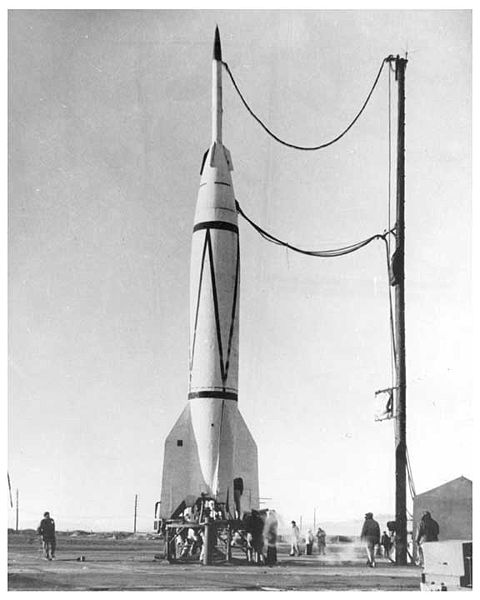The RTV-G-4 Bumper was a sounding rocket built by the United States. A combination of the German V-2 rocket and the WAC Corporal sounding rocket, it was used to study problems pertaining to two-stage high-speed rockets. The Bumper program launched eight rockets between May 13, 1948 and July 29, 1950. The first six flights were conducted at the White Sands Missile Range; the seventh launch, Bumper 8 on July 24, 1950, was the first rocket launched from Cape Canaveral.
Bumper 5, launched February 24, 1949
Bumper in two pieces: V-2 first stage behind WAC Corporal second stage
Test launch of a Bumper V-2.
Image: Bumper wac 01
The WAC Corporal was the first sounding rocket developed in the United States and the first vehicle to achieve hypersonic speeds. It was an offshoot of the Corporal program, that was started by a partnership between the United States Army Ordnance Corps and the California Institute of Technology in June 1944 with the ultimate goal of developing a military ballistic missile.
JPL director Frank Malina with a WAC Corporal rocket (minus the solid-fuel boosters)
WAC Corporal on display at the White Sands Missile Range Museum
WAC Corporal on display at the National Air and Space Museum







